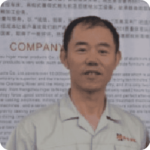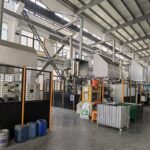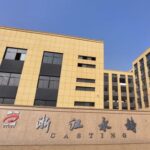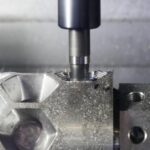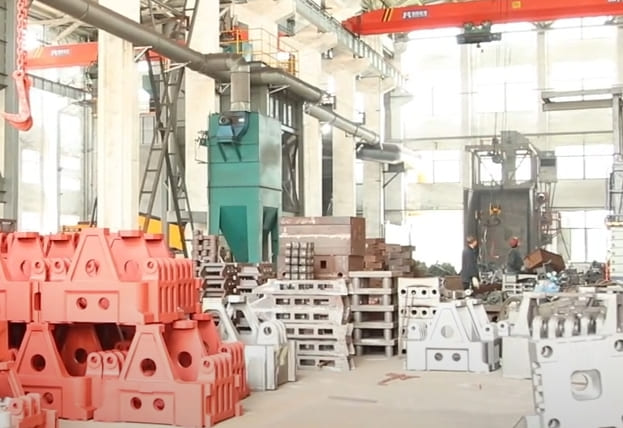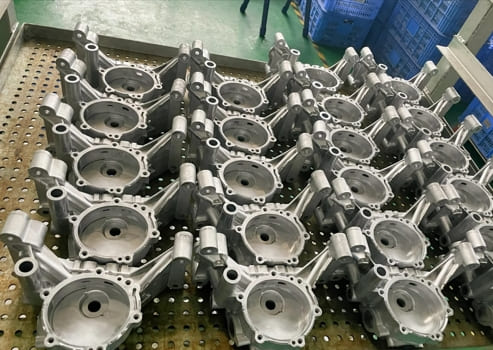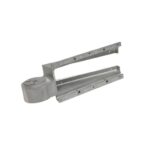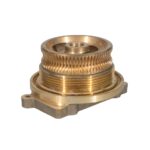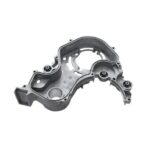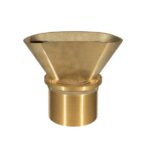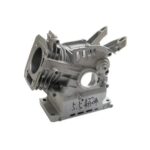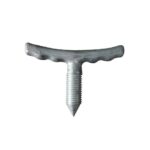Aluminum die-casting lets engineers pour molten alloy into a single mold shot, forming a stiff yet light shell around the battery pack. Because aluminum leads steel and plastics in heat flow, the housing turns into a built-in heat sink that protects cells from thermal spikes, runaway events, and cycle-life loss.

Why Choose Aluminum Die-Casting for EV Battery Housings?
Die-casting combines aluminum’s 235 W/m·K conductivity with near-net-shape freedom. Suppliers cast ribs, bosses, and channels all at once, trimming welds and gasket lines that leak heat and fluids later. The 2.7 g/cm³ density also keeps curb weight low—vital for range and handling.
Key gains
- Fast heat flow — aluminum spreads cell warmth 6× faster than steel.
- One-piece strength — no patchwork of stamped parts and weld spots.
- Tight tolerances — CNC clean-up to ±0.01 mm if pack alignment demands.
- Re-cyclability — alloy recycles at lower energy than fresh billet.
Thermal Pathways Inside a Die-Cast Aluminum Housing
Smooth heat paths must be built in, not added later.
- Cast-in liquid channels route coolant beside the hottest cell rows.
- Uniform wall stock avoids local hot points that speed cell aging.
- Finned exteriors enlarge surface for air under-body flow.
- Machined pockets hold phase-change pads that soak peak loads.
Structural & Safety Needs Unique to Battery Packs
A housing does more than carry modules; it shields passengers and first responders.
- Must absorb crash pulses in side-pole and offset hits.
- Requires IP67 or IP69K sealing against road splash and car-wash jets.
- Needs EMI shielding so high-voltage gear stays quiet on radar and infotainment.
- Fire-containment ribs guide venting gas down and away from the cabin.
Aluminum Die-Cast vs Other Housing Materials
| Metric | Die-Cast Aluminum | Stamped Steel | Extruded Al + Weld | Polymer Composite |
|---|---|---|---|---|
| Weight (relative) | Lightest | Heaviest | Medium | Light |
| Thermal flow | High | Medium | High | Low |
| Piece count | 1 shot | 6–10 welds | 3–5 welds | 1 mold |
| Fire hold time | Excellent | Good | Excellent | Poor |
| Tooling lead | 16–18 weeks | 10–12 weeks | 14–16 weeks | 20 weeks |
Die-cast aluminum pairs top heat flow with low part count, beating rivals on both service life and assembly speed.
Design Tips for Better Thermal Control
Good castings start on the CAD screen.
- Keep wall ribs under 4 mm; thick ribs trap heat.
- Pick A360, A380, or ADC12 alloys—each pours clean and conducts well.
- Route coolant inlets close to cells that see peak current first.
- Leave machining stock only where bus-bar flatness is vital; every extra gram holds warmth.
Testing & Validation Checklist
Before volume builds, run these steps:
- CFD & FEA to map coolant flow and shell stresses.
- Nail-penetration fire test for UL 2580 lines.
- Thermal-runaway vent check—confirm gases exit at planned weak point.
- Road-load fatigue—simulate 250 000 km vibration.
- IP leak test at 30 kPa pressure differential.
Supplier Vetting Questions
Before sending prints, ask:
- Do you run presses above 3 000 t and 40 kg shot weight?
- Can you provide CT scans for each PPAP lot?
- Is leak testing performed in-house or subcontracted?
- Are ISO 9001 and IATF 16949 both current and pack-scope covered?
- Which mold-fill code—Magmasoft, ProCAST—backs your cavity design?
Case Study — 12 °C Cooler Battery on a 400 km BEV
An anonymous mid-size BEV replaced a welded steel box with a 1 × 1 m die-cast shell.
- Temperature drop: cell mid-plane ran 12 °C cooler during WLTP fast-charge.
- Weight change: 54 kg → 37 kg (–17 kg).
- Range gain: +11 km per charge from lower HVAC load.
- Return on tooling: 14 months via warranty-claim reduction and assembly time cut.
Quick FAQ
Can cast-in channels replace bolt-on cooling plates?
Yes—properly cast passages cut joints and lower thermal resistance, provided porosity stays below 0.8 %.
How does trapped gas affect heat spread?
Gas pockets block conduction; vacuum casting and squeeze stages keep them below critical levels.
What tooling lead time applies to a one-meter housing?
Typical schedule is 16–18 weeks, including steel sourcing, EDM work, and first-shot trials.
Which surface finish helps corrosion without hurting heat flow?
Thin-film conversion coat plus clear seal keeps conductivity high while passing 1 000 h salt spray.
Do recycled alloys lower mechanical strength?
Not when chemistry is corrected; tensile values stay within ±3 % of primary-metal baselines.
Searching for High-Quality for Cast Aluminum Parts Supplier?
You’ve come to the right place! Yongzhu Casting is a certified die casting manufacturer with over 20 years of expertise in the industry.
We have successfully completed numerous die casting projects for Aluminum casting parts, particularly in your industry.

Zhejiang Yongzhu Casting Technology Co., Ltd.
Location: Zhejiang, China
Company type: Manufacturers, Producers, Wholesalers
Year Founded: 2004
Main Products: Aluminium die casting, Mold Making, Die Casting, Sand Casting, Gravity Casting
Leading Chinese producer Yongzhu Casting is formerly known as Hangzhou Higer Metal Products Co., Ltd., was established in 2004.
With 20 years of experience in the industry, we are a specialized manufacturer in Aluminum casting and Machining.
Our products are widely used in various applications such as Automotive, Energy, Lighting, Medical, Home Furnishings, Machinery & Equipment etc. Below are our advantages:
Design Review & DFM Support
Our professionals will evaluate your designs and provide suggestions for cost savings. Additionally, we offer Design for Manufacturing (DFM) assistance and conduct mold flow analyses to facilitate efficient production.
State-of-the-Art Manufacturing Equipment
Our facility is equipped with advanced hot-chamber and cold-chamber die casting machinery for aluminum and zinc production.
We also utilize high-precision CNC machines in a temperature-controlled workshop, featuring 3-Axis, 4-Axis and 5-Axis setups to manage any project you have.
Rigorous Quality Control Measures
Our dedicated quality control team ensures that all parts meet the highest standards of quality and consistency. We employ high-accuracy measurement instruments, including CMM, spectrometers, and X-ray detectors.
Comprehensive Surface Treatment Options
We provide a variety of surface finishing techniques for your precision die casting components. Our in-house services include cleaning, polishing, anodizing, shot blasting, and painting.
Flexible Project Acceptance
While larger manufacturers often shy away from low-volume projects, and smaller ones may struggle with quality, Yongzhu Casting stands apart. We prioritize customer satisfaction and willingly accept high-mix, low-volume projects like yours.


